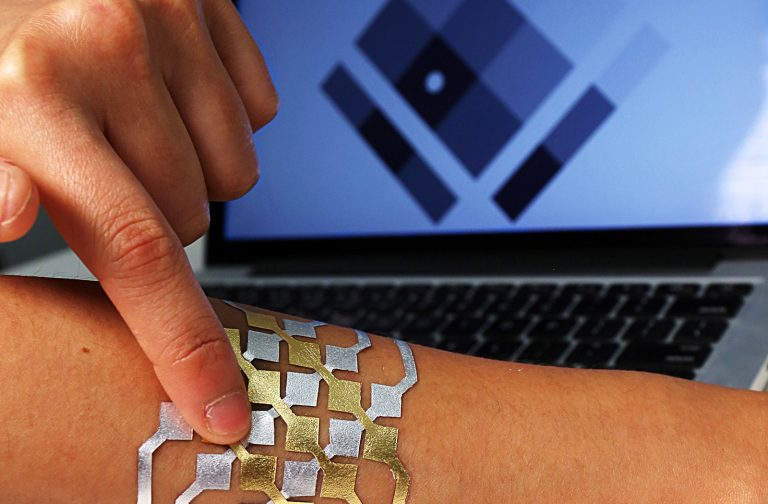
A PhD student at Massachusetts Institute of Technology (MIT) has created temporary “smart” tattoos that allow users to control devices such as mobile phones or laptops just by touching their own skin.
Taiwanese student Cindy Hsin-Liu Kao designed the tattoos, dubbed ‘DuoSkin’, as she believes “there is no fashion statement greater than being able to change how your skin looks”.
The tattoos are made by stamping paper-thin circuit boards into skin-friendly gold and silver leaf, which can then be transferred onto skin using the water-transfer method – exactly the same way you would don a temporary tattoo.
Once the tattoo has been transferred, it becomes an “on-skin interface” that can be used as a trackpad or slider to control electronic devices.
According to MIT Media Lab: “DuoSkin devices enable users to control their mobile devices, display information, and store information on their skin while serving as a statement of personal style.”
WATCH: #Taiwan PhD student creates flash #tattoos that let you control your phone @medialab https://t.co/9LgDbDVZgr pic.twitter.com/1pS4hXhZgo
— Tech Wire Asia (@TechWireAsia) August 17, 2016
The interface tattoos would only last as long as a regular temporary tattoo, but it already has more appeal in terms of style and wearability than previous attempts to create electronic tattoos.
Kao worked in collaboration with Microsoft Research to develop three types of flash tattoos.
The first, as mentioned before, serves as a trackpad to control devices. The second is called an Output Device, which reacts to the temperature of the skin to change color or light up.
The third variety is a Communication Device that resembles QR codes in both look and function – users can use their phones to read data off the tattoo to access a website or app.

DuoSkin capacitive touch slider made from gold and silver leaf. (Pic: Jimmy Day)
In May, Kao and her colleagues had originally presented a paper on DuoSkin, then called Tattio, at the ACM CHI conference in California.
“We believe that in the future, on-skin electronics will no longer be black-boxed and mystified,” said the team behind DuoSkin.
“Instead, they will converge towards the user friendliness, extensibility, and aesthetics of body decorations, forming a DuoSkin integrated to the extent that it has seemingly disappeared.”
Kao will also present an updated paper on the innovation at the International Symposium on Wearable Computers (ISWC 2016) in Heidelberg, Germany, in September.
Image via Jimmy Day/MIT Media Lab
This article first appeared on Tech Wire Asia.
Liked this? Then you’ll love these…
Fabric of the future: University researchers invent self-healing, toxin-neutralizing fabric
Watch this phone literally go mobile, thanks to a special case designed by university researchers








